Galápagos Islands, Ecuador; January 12-19, 2019
All photos are © Marshall Faintich
January 12; San Cristóbal
We left Quito early in the morning for a flight to Guayaquil, where the National Geographic passengers that had not been on the pre-trip to Mashpi Lodge boarded to plane, and we made the 600 mile long flight to San Cristóbal in the Galápagos Islands. We were to spend a week on the Endeavour II, and all of the embarking and disembarking from the ship was via Zodiacs. Only three locations: San Cristóbal, Santa Cruz, and Baltra, had docks. All of the other landings were wet in one to two feet of water, or dry onto rocky surfaces. Even the two times we toured on a small glass-bottom boat required tranferring to and from the Zodiacs.
Access to the various islands is strictly controlled, and we only learned our specific itinerary two weeks before leaving the states. I carefully researched what target birds to look for on each island, and my highest priority avian species to see were Blue-footed Booby and Galápagos Hawk. This booby is the signature bird of the islands, and 35 years ago, I was given a great photo of a pair of Galápagos Hawks that was a primary factor in both my wanting to visit the Galápagos Islands, as well as my desire to do wildlife photography.

San Cristóbal, Galápagos
| | |
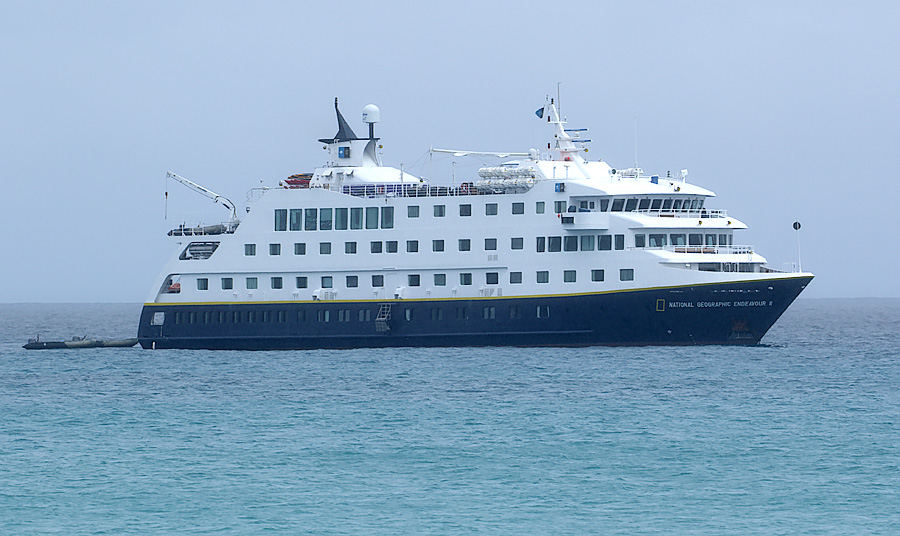
Endeavour II
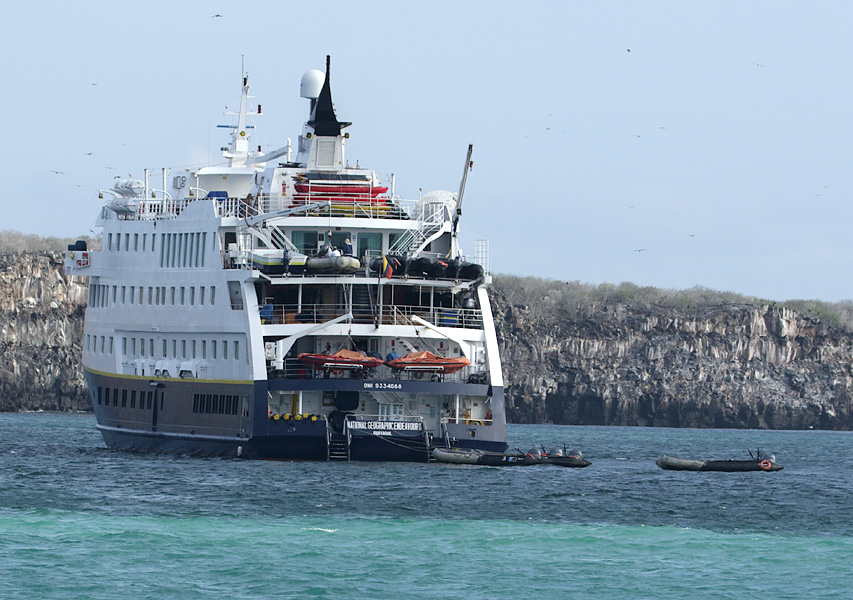
Zodiacs
| | |
As soon as we got to the dock after transfer from the airport, we had our first encounter with a sea lion. As small gray bird flew across the rocks. It was a Lava Heron, and its gray coloring made for good camouflage with the gray rocks. These herons feed on crabs, but the shells of the bright orange, adult crabs are too hard for the Lava Herons to crack, so they prefer young crabs. Nature has made the shells of the young crabs gray as well, to help camouflage them from the herons. On the way to the ship, I saw a Common Noddy and a few unattributed storm-petrels.

Sea Lion
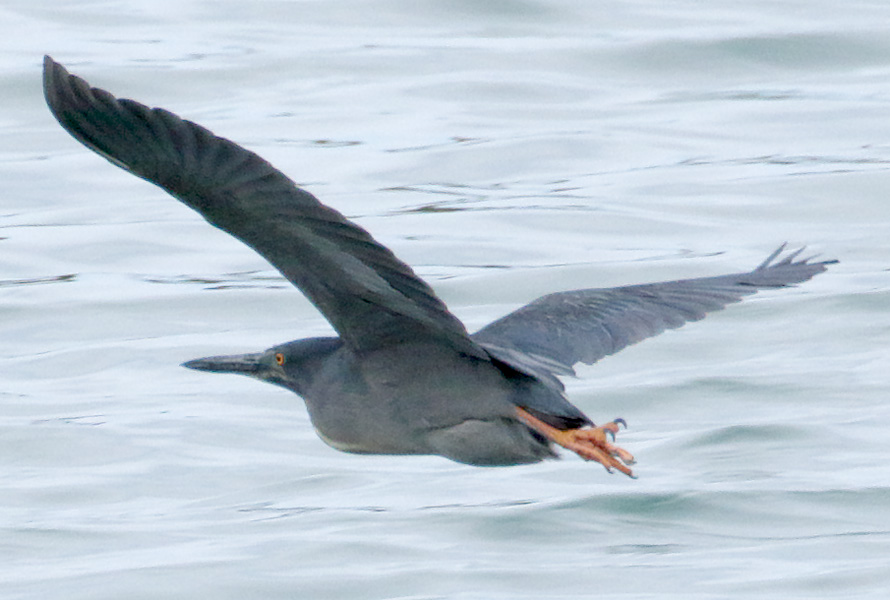
Lava Heron
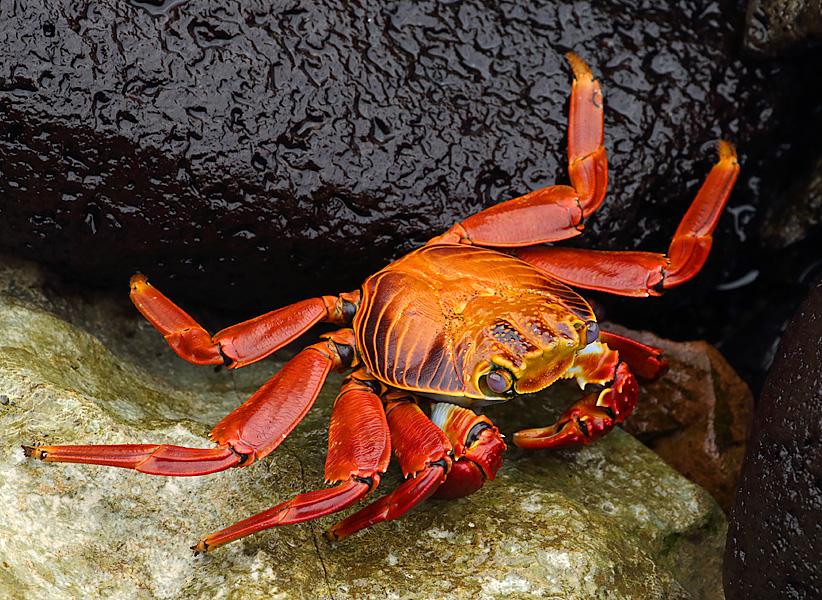
Adult Sally Lightfoot Crab
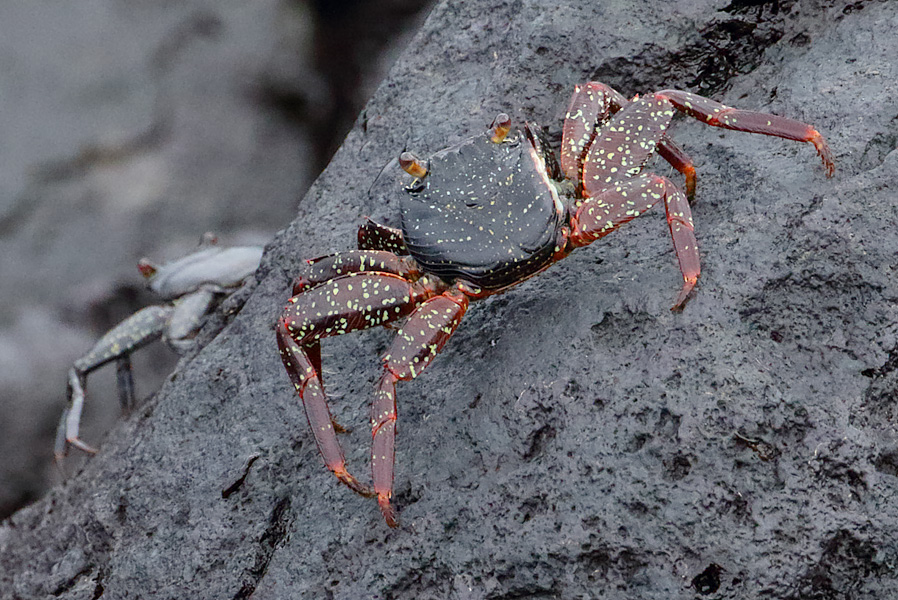
Young Sally Lightfoot Crab

Common Noddy
After unpacking in our cabin, we returned to the island for a short tour. Two of the first avian species I saw were a Chatham (San Cristóbal) Mockingbird, and one of the Darwin finches. There are 13 Darwin finches in the Galápagos, and the best way to identify them is by bill shape and size. Fortunately, the distribution of these finches on the various Galápagos islands is fairly well known, but hybrids occur presenting an even greater challenge. It was difficult to identify many of these finches, and I have probably made some errors. I had thought that Charles Darwin had studied these finches that led to his theory of evolution, but the finches were named after him long after his research. It was the four mockingbird species in the Galápagos that triggered his theory.
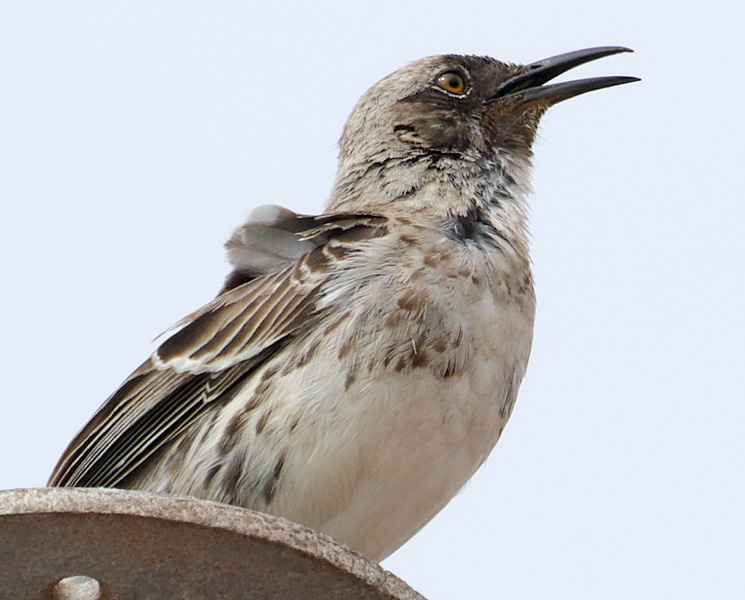
Chatham (San Cristóbal) Mockingbird

Small Ground Finch
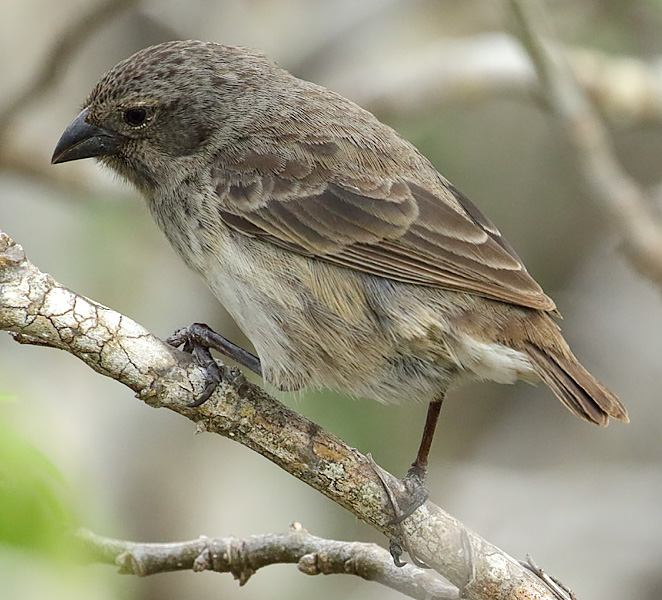
Small Ground Finch
As we hiked up a steep trail, we saw several avian species. The Yellow Warbler race is nearly endemic to Galápagos, and only found elsewhere on the Cocos Islands. The male Yellow Warbler of this race has a variable red crown.
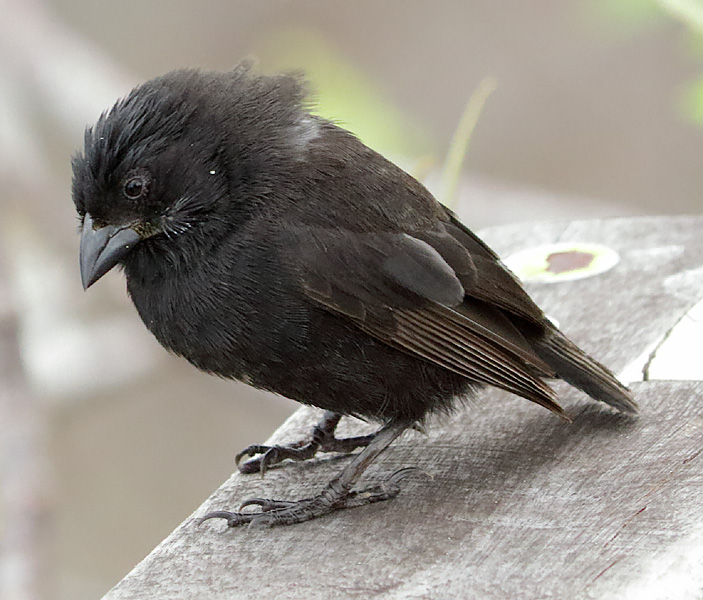
Medium Ground Finch

Common Cactus-Finch

Galápagos Flycatcher

Galápagos Flycatcher

Yellow Warbler
A Smooth-billed Ani was along the trail.
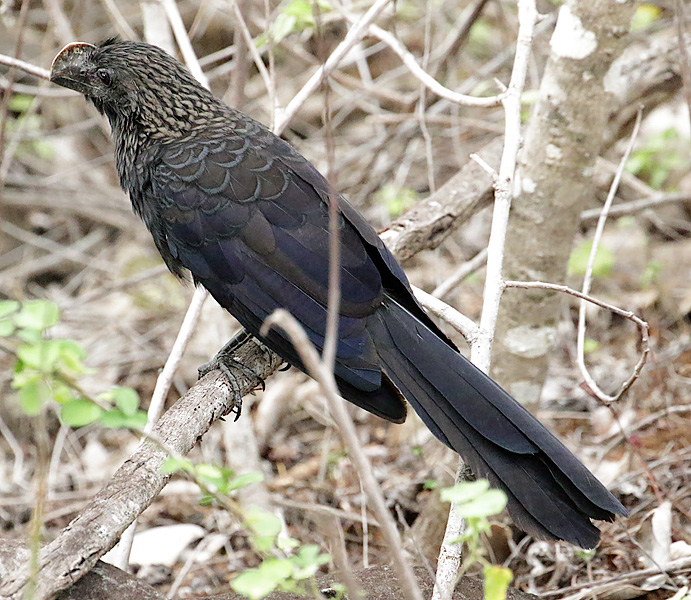
Smooth-billed Ani
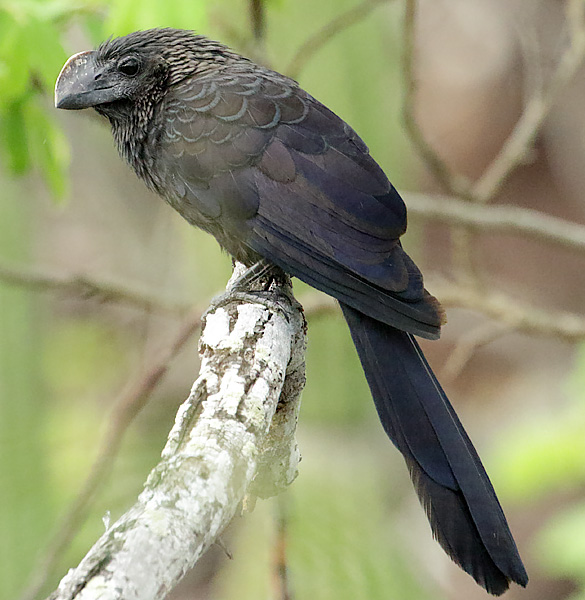
Smooth-billed Ani
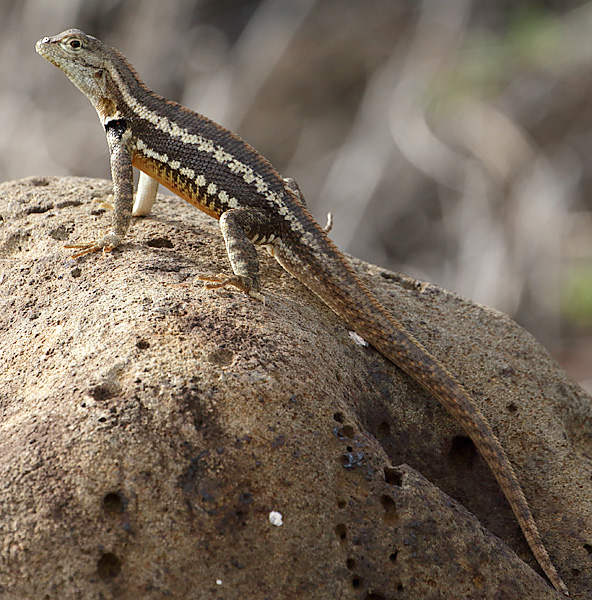
San Cristóbal Lava Lizard
Magnificent Frigatebirds were flying everywhere. I saw males, females, and white-headed juveniles, and we spotted a nesting site highup on one of the cliffs.

Male Magnificent Frigatebird
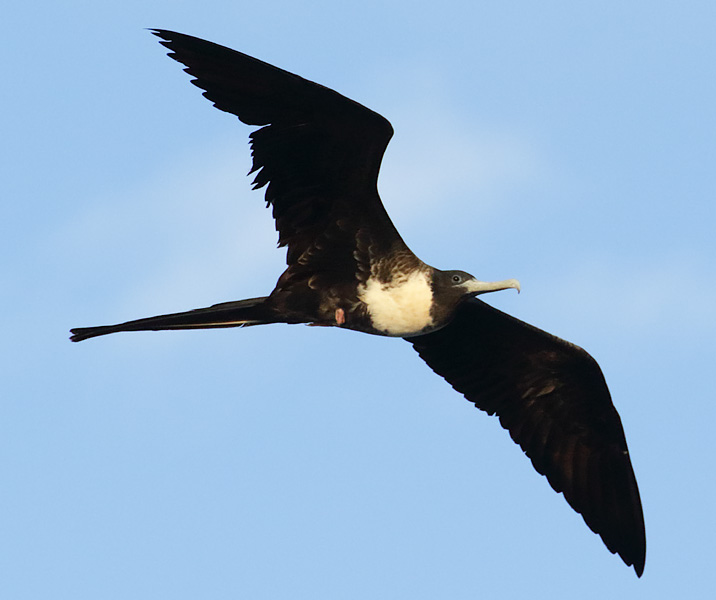
Female Magnificent Frigatebird
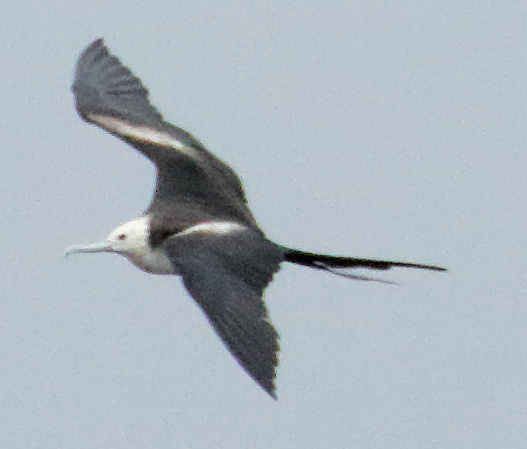
Juvenile Magnificent Frigatebird
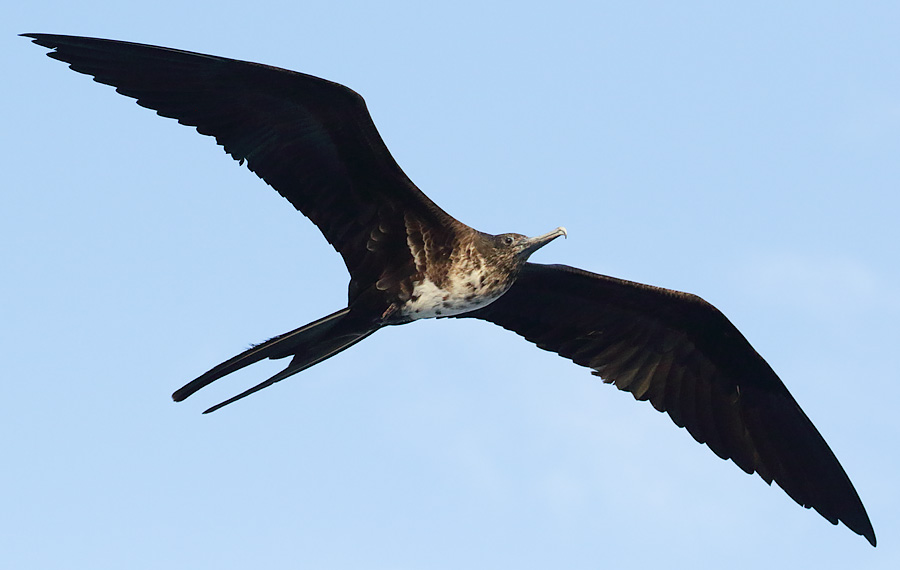
Immature Magnificent Frigatebird
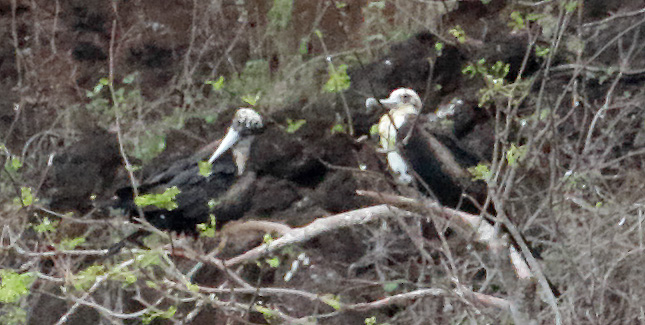
Magnificent Frigatebird nesting site
I got a photo of a flying bird, and it wasn't until several days later when reviewing the photos on my camera viewfinder, that I realized it was a Blue-footed Booby.
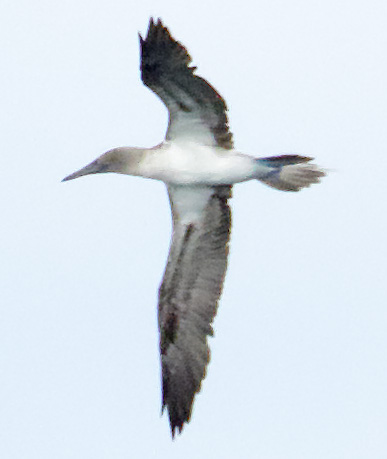
Blue-footed Booby
We also saw Brown Pelicans, and the pelicans here are an endemic sub-species.
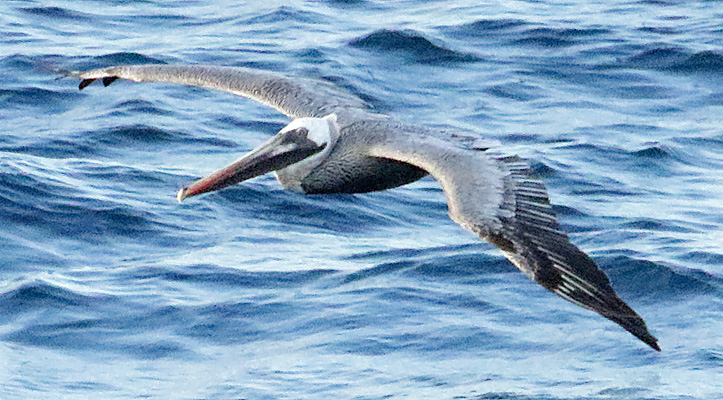
Brown Pelican
When I got back to the ship, a migrating Laughing Gull flew by.

Laughing Gull
Click here to continue on the trip to Española


























